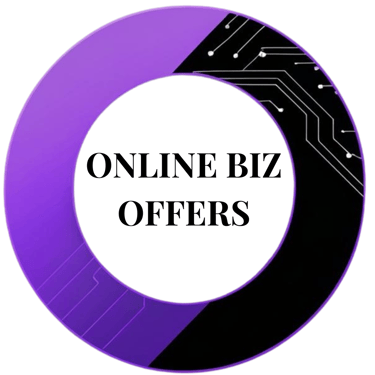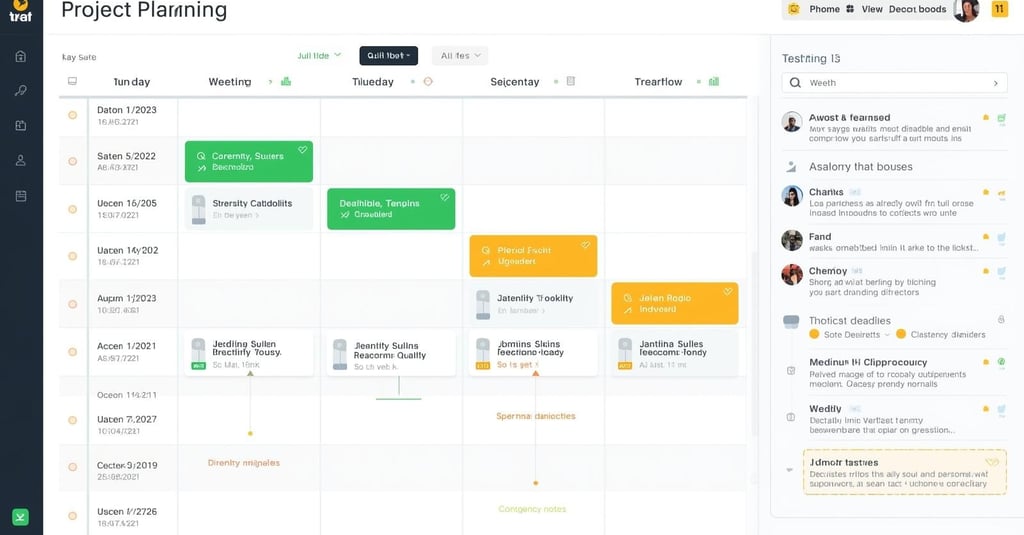Stop Scrolling, Start Creating ⚡ Visit Our Digital Store Now!
How to Launch a Product: The Complete Guide to Building Traction From Day One
Learn how to launch a product with real traction. Master pre-launch validation, execution strategy, and post-launch growth. Get the complete 8-week roadmap, tools, and checklist to build momentum from day one.
DIGITAL MARKETINGMAKE MONEY ONLINESOCIAL MEDIAAIE-COMMERCEAFFILIATE MARKETINGONLINE BUSINESS IDEASFREELANCING
Eddy Enoma
10/24/202511 min read
The Complete 8-Week Roadmap to Build Momentum and Get Real Traction
You've built something you genuinely believe in. Maybe it's a SaaS tool, a mobile app, a feature you've been planning for months, or a digital product you've poured your heart into. Launch day arrives, and you're ready to show the world what you've created. Then it happens: silence. No buzz. No surge of signups. No excitement in your inbox. Just the sound of your own expectations deflating.
If this resonates, you're not alone. According to research from Product Hunt and startup analysis platforms, roughly 70% of product launches fail to gain meaningful traction in their first month. The frustration isn't because the product is weak. It's because the launch lacked structure, clarity, and a real strategy behind it.
Here's the truth that most makers miss: launching a product isn't about flipping a switch on launch day. It's about strategically connecting what you've built with people who actually care about solving their problems. It's about timing, messaging, and execution across multiple channels in perfect harmony.
In this guide, I'm going to walk you through the exact roadmap I use with makers and entrepreneurs to launch with real impact. You'll get tactical steps, specific tools that actually work, real metrics to track, and a launch checklist you can start using today. Let's dig in.
What Does a Successful Product Launch Actually Look Like?
Before you start planning anything, let's talk about success. And I mean real success, not the vanity metrics that make you feel good in the moment.
Too many makers get obsessed with surface-level achievements. They chase downloads, media mentions, or "buzz" without asking the harder question: Is any of this moving the needle on what actually matters for my business?
A launch with viral hype but zero conversions is like lighting fireworks at a ghost town. Exciting for a moment, then completely pointless. You need sustainable growth, not temporary noise.
Start by defining 2 to 3 core success metrics right now. These are your KPIs. What are they? Maybe it's 500 signups in week one. Maybe it's a 15% conversion rate on your landing page. Maybe it's reaching $1,000 in MRR by week four. Maybe it's getting a feature mention in a major publication in your space.
Whatever you choose, make it measurable and make it concrete. Then anchor every decision you make during the launch to these metrics. When you're tempted to chase a shiny opportunity that doesn't align with your KPIs, you have a clear reason to say no.
Pre-Launch: Building the Foundation That Holds Everything Up
This is where launches actually fail, and most makers don't realize it until it's too late.
The difference between a launch that fizzles and one that creates real momentum often comes down to the groundwork you lay weeks before launch day. The more you prepare, test, and refine during this phase, the smoother your actual launch will be.
Validate Your Idea and Talk to Real Humans
You can't launch something into the void and hope people care. You need proof that people actually have the problem you're solving.
Start talking to potential customers now. Conduct customer interviews. Run quick surveys. Build lean prototypes or a simple landing page to gauge interest. If you want to validate demand before building, create a "Coming Soon" page with an email waitlist and drive traffic to it using social media or relevant communities.
The best part? This doesn't take as long as you think. A study by Product School found that companies spending just 4 to 6 weeks on pre-launch validation increased their launch success rate by 58%. Spending a couple of weeks getting real feedback from real people is one of the best investments you can make.
Get Crystal Clear on Your Audience and Message
This is non-negotiable: you need to know exactly who you're talking to and why they should care.
Ask yourself these questions right now. Who is this product for? Be specific. Not "small business owners" but "freelance graphic designers charging $50 per hour who struggle to manage client feedback." What problem are they trying to solve? What alternatives do they currently use? Why should they pick your product instead of those alternatives?
Now draft a positioning statement. Use this format: "[Product] helps [persona] do [benefit], unlike [alternative]." For example: "Notion helps remote teams organize projects and documents in one place, unlike scattered emails and multiple tool subscriptions."
Clarity here is everything. Confusion kills launches. If people land on your page and spend more than 10 seconds trying to understand what you do, you've already lost them.
Create Your Assets and Build Your Outreach Strategy
You'll need a toolkit ready before launch day. Here's what goes on the list:
A landing page with compelling hero visuals and clear CTAs. Your email sequences for before, during, and after launch. Blog content and SEO-optimized pieces that drive organic traffic. Social media teasers, countdowns, and visuals for all your main platforms. A media and press list with relevant journalists and micro-influencers in your niche. Early user testimonials and quotes from beta testers.
Get these done in advance. You don't want to be scrambling to write email copy on launch morning while everything else is on fire.
Align Your Team and Set a Realistic Timeline
Here's something that catches a lot of teams off guard: internal misalignment kills launches faster than external factors. If your product team, marketing team, support team, and sales team aren't synchronized, you'll have mixed messages going out to the market, and execution will fall apart.
Schedule regular syncs during the pre-launch phase. Make sure everyone knows their role. Decide on a realistic timeline and stick to it. Don't rush the launch just because you're impatient. Many launches fail because they were compressed into too tight a schedule.
Have contingency plans. Seriously. Things break. Systems fail. Payment processors go down. Your email deliverability might have issues. Your website might get overwhelmed with traffic. For each critical piece of your launch, have a Plan B and even a Plan C ready to go.
The Tools That Actually Remove Bottlenecks From Your Launch
Let me be transparent here: tools don't guarantee success. But the right tools eliminate friction at critical moments, and friction is what kills momentum.
Here are the tools I actually use and recommend for launches. They're not flashy, but they work:
GetResponse for Email and Marketing Automation
During launch, email is your most powerful channel. You've built a waitlist. You have beta users. You have a contact list. GetResponse makes it simple to turn those contacts into a coordinated launch wave.
Use GetResponse to build your drip campaigns and behavior-based sequences. Create autoresponders so when someone signs up, they immediately get onboarded. The visual workflow builder means you're not sitting there writing code. You can map out your customer journey in an afternoon.
When launch day arrives, you send one email to your waitlist. GetResponse makes sure it lands. Then automation takes over. Users who clicked your link get follow-up sequences. Users who didn't get different sequences. This is how you keep momentum going instead of relying on a single day.
Check out GetResponse and see their automation templates
Tidio for Live Chat and Customer Support
Your landing page goes live, and traffic comes in. But if no one's answering questions, people leave. That's where Tidio comes in.
Add Tidio's chatbot to your landing page and your product pages during launch. Set it up to answer the FAQs you already know people will ask. What's the pricing? Can I try it for free? How does this compare to X? The chatbot handles it in seconds. If someone needs a real person, they get routed to live chat, or they leave a message.
This isn't just about customer service. It's about reducing drop-off and keeping people engaged instead of letting them bounce because no one responded. Check out Tidio's pricing page for options
They also have an AI Agent product that's worth exploring
A/B Testing AI for Rapid Experimentation
After launch, the data starts coming in, and you realize something important: your original messaging might not be the best version. Maybe your headline needs work. Maybe your button text should be different. Maybe a different value proposition resonates more.
A/B Testing AI lets you run experiments fast. Test different headlines. Test different button copy. Test different opening statements. It helps you iterate on what's actually working instead of guessing. Use it to improve your conversion rate week by week
Rewardful for Turning Users Into Promoters
Your first users are your most powerful marketing channel. They have networks. They have audiences. They have credibility in your space. But why would they share? Give them a reason.
Rewardful lets you set up a referral program quickly. Early users who share your product and bring in new signups earn rewards. Maybe it's a discount. Maybe it's account credits. Maybe it's cash back. The incentive gets people talking and turns your best customers into your best salespeople.
Virly for B2B and SaaS Lead Generation
If you're launching a B2B or SaaS product, you need to be where your customers are. LinkedIn is where business decision makers live. Virly taps into LinkedIn lead channels and helps you identify the exact profiles and companies that match your ideal customer profile.
Use Virly to seed early conversations with warm prospects. Don't just hope people find you. Actively reach out to people who fit your ICP. It's proactive and it works.
Faceless.video and Predis AI for Content Creation at Scale
You need visual content for your launch. Explainer videos. Product demos. Teaser clips. But hiring a video production company costs thousands and takes weeks. That's where Faceless.video steps in.
Generate demo and promo videos quickly without being on camera. Then use Predis AI to create social media content and schedule posts across multiple platforms at scale. No more manually writing captions for each platform. Create once, let the AI adapt it, schedule everywhere.
Launch Day Execution: When Theory Becomes Reality
This is it. All the preparation leads to this moment. Here's how to execute:
Coordinate your multichannel rollout. Email goes out first. Then the tweets go live. Then your blog post publishes. Then your influencers post their content. You want everything to hit at roughly the same time, so the signal is strong and visible to the algorithm.
Be real-time and responsive. This is the day you live on your product. Watch the comments. Answer questions quickly. Amplify posts from excited users. If someone's asking the same question multiple times, you know your messaging might be unclear. Fix it in real time.
Use social proof everywhere. Early adopters become your best advocates. Share their quotes. Share their screenshots. Show that real people are actually using your product and getting value. Social proof moves faster than any marketing copy you can write.
Double down on what's working. If a particular tweet gets traction, repost it and write a follow-up thread. If one piece of content is driving more signups than the others, create more content in that style. Don't spread yourself thin, trying everything equally. Concentrate your energy where momentum is actually building.
Monitor and adjust in real time. Watch your conversion rate. Watch where traffic is dropping off. Is it on the landing page or in the signup flow? Are people reading your blog post but not signing up? Are they clicking the button but abandoning your form? The data tells you where to adjust your message or your user experience.
Post-Launch and Sustaining Growth
Your launch week is over. The immediate excitement fades. This is where 80% of launches fall apart because makers think the hard part is done.
It's not. The hard part is actually just beginning.
Collect feedback aggressively. Use surveys. Look at usage data. Calculate your NPS. Find out what your early users love and what they tolerate. Then iterate fast. Your second version should be noticeably better than your first, based on what real people told you.
Build an onboarding flow that actually works. A user signs up, and then what? Walk them through the core value proposition. Show them how to get their first win. Use tutorials and guided experiences. The people who see value in the first few minutes are the people who stick around.
Keep creating content. Write case studies about your early wins. Tell behind-the-scenes stories about how you built the product. Share learnings from the launch itself. This keeps you visible and positions you as a trusted voice, not just someone trying to make a sale.
Expand your channels gradually. Once you've proven your launch worked on email and social, test paid ads. Build out your SEO strategy. Explore new content platforms relevant to your audience. But do this after the launch, not during it.
Common Launch Mistakes and How to Avoid Them
Vague messaging kills launches more often than bad products do. If people land on your page and don't immediately understand what you do or why it matters, they're gone. Test your messaging with real users before launch. Keep refining until it's crystal clear.
Launching too early means your product still has rough edges. You haven't thought through edge cases. Your onboarding is clunky. You get negative first impressions that spread. Always use an MVP approach or a soft launch to beta testers first. Get feedback. Fix the obvious issues. Then do your real launch.
Ignoring post-launch means your buzz vanishes quickly, and users drop off. You need a retention strategy and a continuous growth strategy. The launch is the beginning, not the end.
Disjointed team execution leads to mixed messages and failed coordination. Have clear roles. Have regular syncs. Make sure everyone knows what success looks like.
No contingency plan means unexpected issues derail everything. Things will break on launch day. Have backup plans for your backup plans.
The Real Launch Timeline That Works
Here's an 8-week roadmap you can follow:
Week 1: Validate your idea through customer interviews and surveys. Define your core messaging and positioning statement.
Week 2: Launch your landing page with a waitlist. Start creating teaser content for social media. Begin building your email sequences.
Week 3: Start outreach to relevant journalists, micro-influencers, and potential partners in your space. Build your list of people to contact at launch.
Week 4: Invite 30 to 50 beta testers. Collect feedback. Get testimonials and quotes that you can use in your launch content.
Week 5: Finalize all your assets. Email sequences should be written and scheduled. Blog posts should be drafted. Social graphics should be designed. Everything should be ready to go.
Week 6: Start warming up your audience with value-added content. Remind them about what's coming. Build anticipation without being annoying about it.
Week 7: Do a soft launch or early access period. Fix any critical issues. Make sure your systems can handle the load. Prepare for your official launch.
Week 8: Official launch day. Execute across all channels. Monitor. Adjust. Amplify what's working.
Then the real work begins: onboarding users, iterating based on feedback, and sustaining momentum.
Your Action Plan Starts Today
Launching well is genuinely one of the hardest things a maker does. But it doesn't have to be chaotic or unpredictable. With structure, clarity, and the right tools supporting your effort, you can create real momentum.
The tools I mentioned make this possible. GetResponse handles your email automation. Tidio answers customer questions instantly. Rewardful turns your users into promoters. Virly connects you with the right prospects. A/B Testing AI helps you refine your message. Faceless.video and Predis AI multiply your content creation. Together, they remove friction and let you focus on strategy and relationships instead of manual work.
Don't launch alone. Get these tools in place. Coordinate your team. Execute with intention. And watch what happens when preparation meets opportunity.
Your launch starts now. Make it count.
If this helped you, you’ll like my weekly newsletter. I share real launch lessons, tools, and strategies that actually work. Sign up below.
Subscribe for Exclusive Tips & Updates. Enter Your Email Below!



Get the latest strategies to create, automate, and monetize with AI, content, and digital marketing straight to your inbox!
🔒 We respect your privacy. Your email is safe with us. Unsubscribe anytime.
Address
Sporerweg 16
94234 Viechtach, Germany
Contacts Us
(049) 170 499 6273
Subscribe to our newsletter
© 2025 Onlinebizoffers. All rights reserved.












